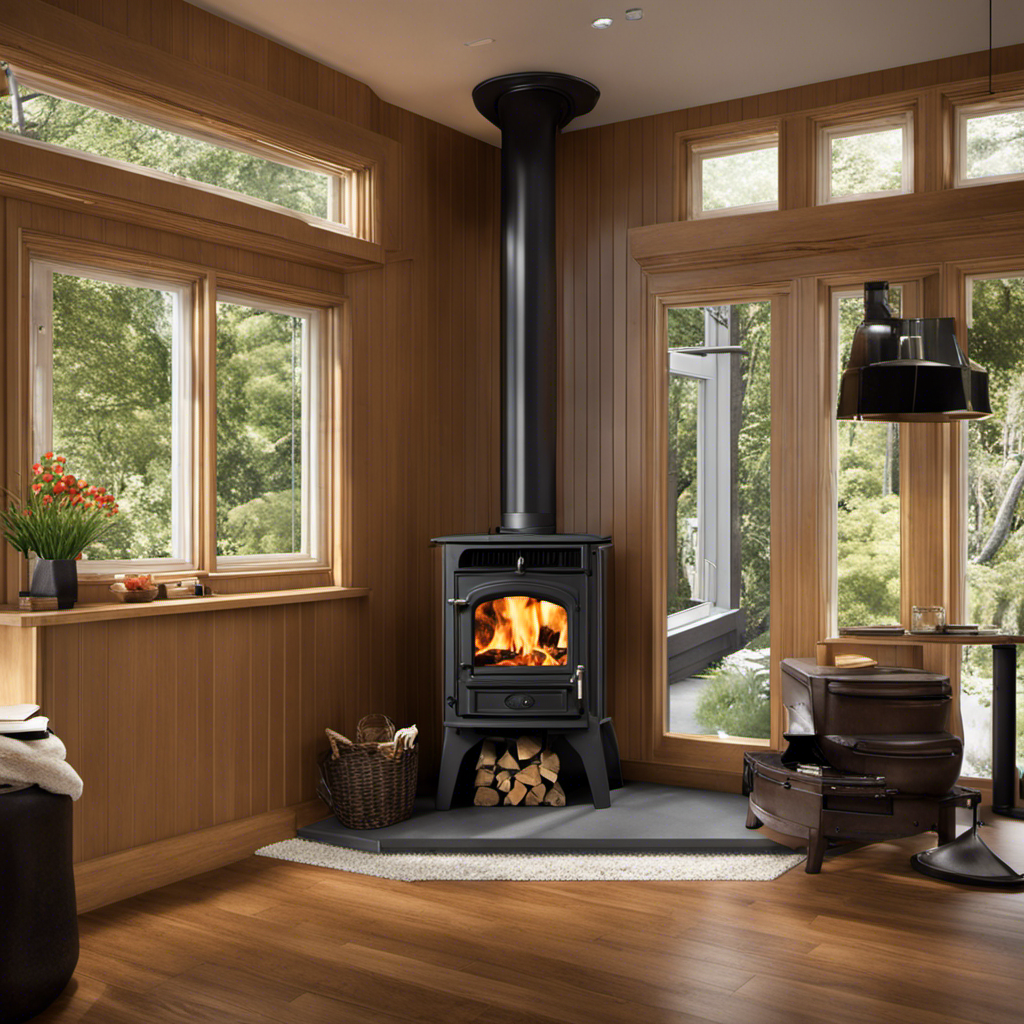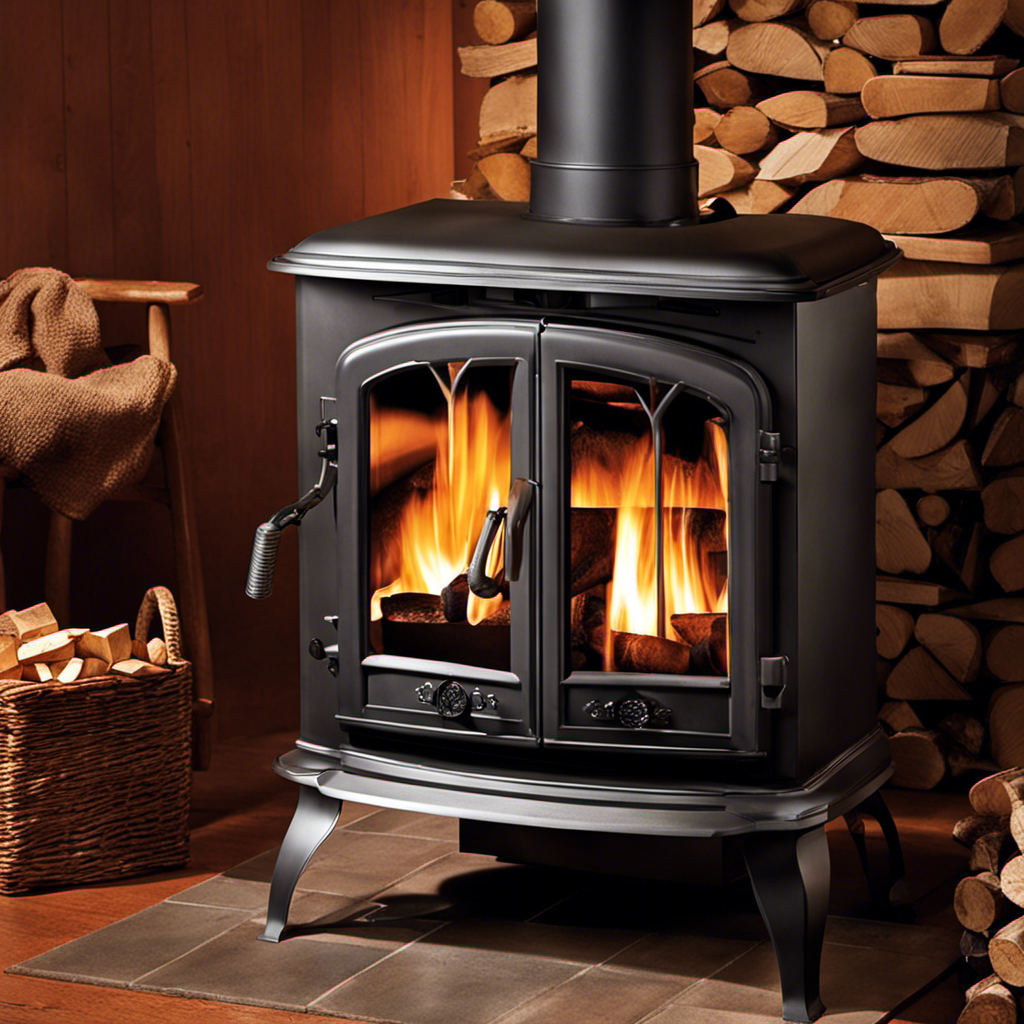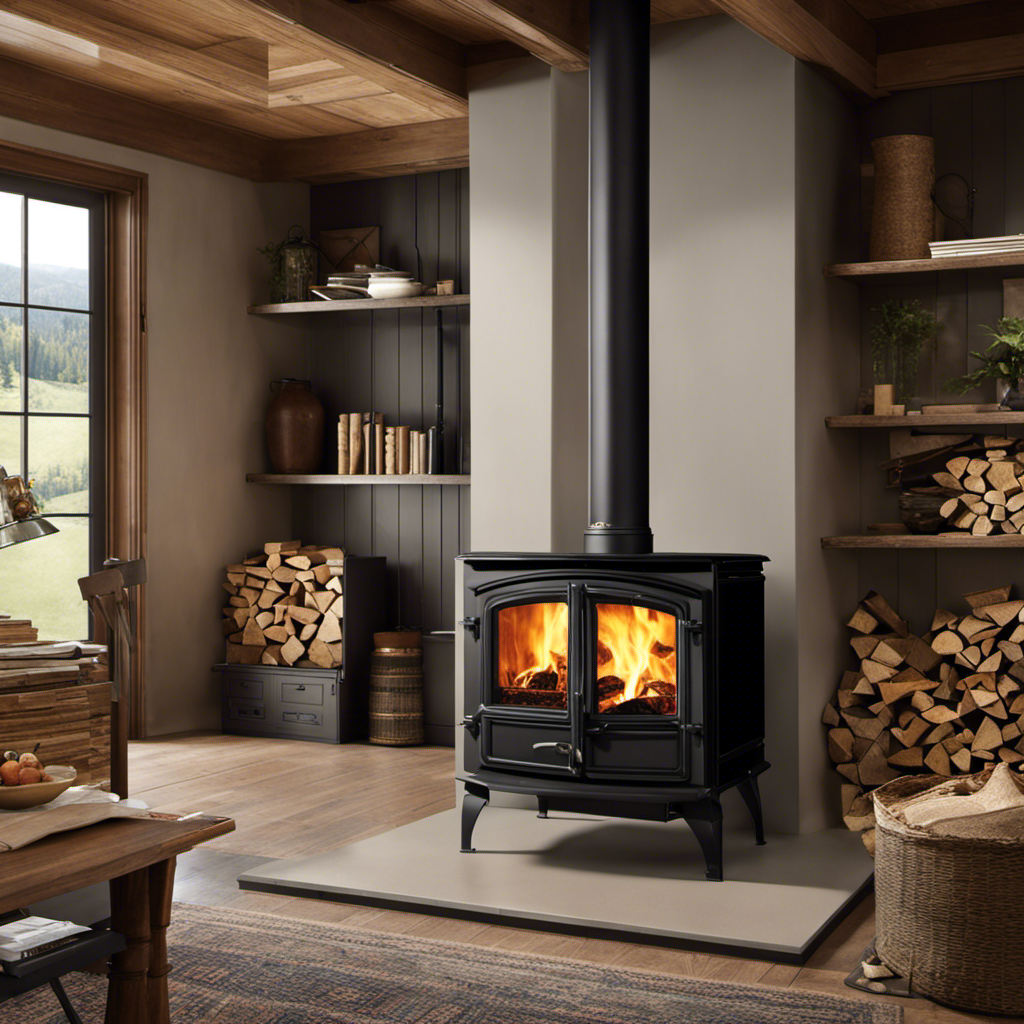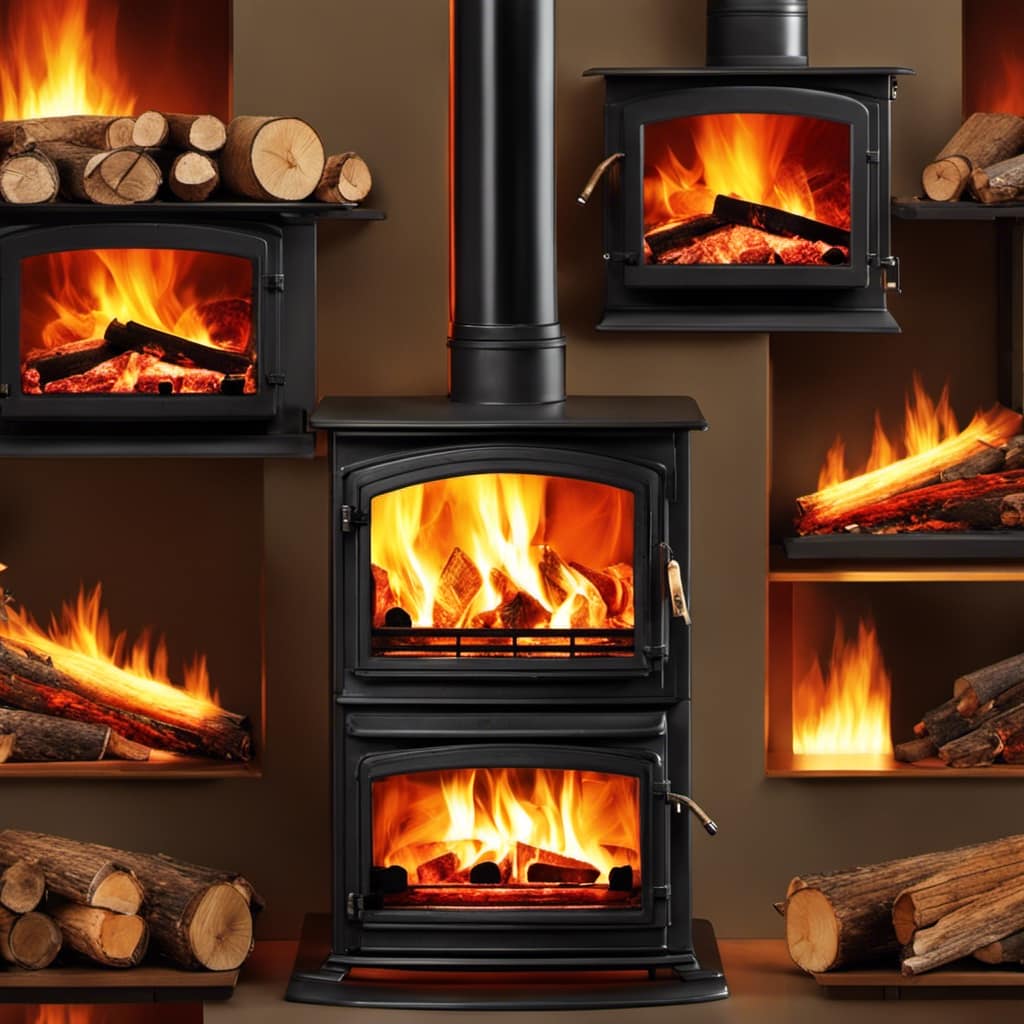Greetings!
So, you’ve just gotten yourself a brand new soapstone wood stove, huh? Well, let me tell you, breaking it in is key to ensuring its longevity and optimal performance.
In this article, I’ll walk you through the process step by step, covering everything from preparing your stove for its initial use to gradually increasing the heat output.
Trust me, by the end, you’ll be a pro at maintaining and cleaning your soapstone wood stove.
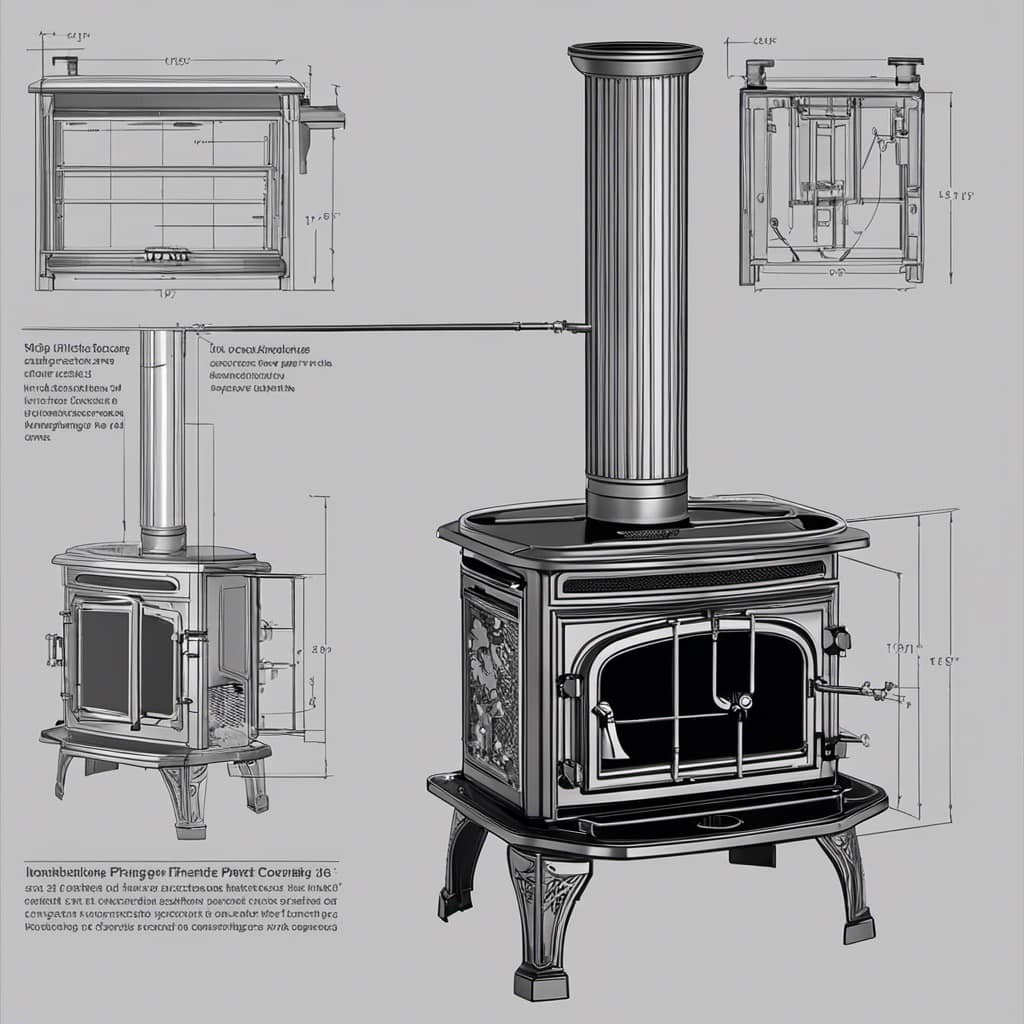
Let’s get started!
Key Takeaways
- Breaking in your soapstone wood stove ensures optimal performance and longevity.
- Choose the right size stove to maximize the benefits of using soapstone.
- Follow the manufacturer’s instructions to prepare the firebox and season the soapstone.
- Gradually increase the heat output for proper conditioning and monitor the stove’s performance.
Understanding the Importance of Breaking In Your Soapstone Wood Stove
I can’t stress enough the importance of breaking in my soapstone wood stove to ensure optimal performance and longevity.
Soapstone is an excellent material for wood stoves due to its unique properties. It has a high heat retention capacity, which allows it to store and radiate heat long after the fire has died down. This not only keeps your room warm for longer periods but also reduces the frequency of refueling.
Additionally, soapstone has a natural resistance to cracking and warping, making it highly durable.

When choosing the right size soapstone wood stove, consider the size of your space and the heat output you desire. A larger stove will provide more warmth but may be excessive for smaller rooms. It’s important to strike the right balance to maximize the benefits of using soapstone in your wood stove.
Preparing Your Stove for Initial Use
Before lighting your stove for the first time, carefully follow the manufacturer’s instructions to properly prepare it for initial use. This includes preparing the firebox and seasoning the soapstone.
To prepare the firebox, remove any packaging materials and debris. Check for any loose parts or damage and make sure everything is securely in place. Clean the firebox thoroughly to remove any dust or residue.
Next, it’s important to season the soapstone. This process involves gradually increasing the heat over several fires to allow the soapstone to expand and contract without cracking. Start with small fires and gradually increase the size over time. This will help the soapstone acclimate to the heat and ensure its longevity.
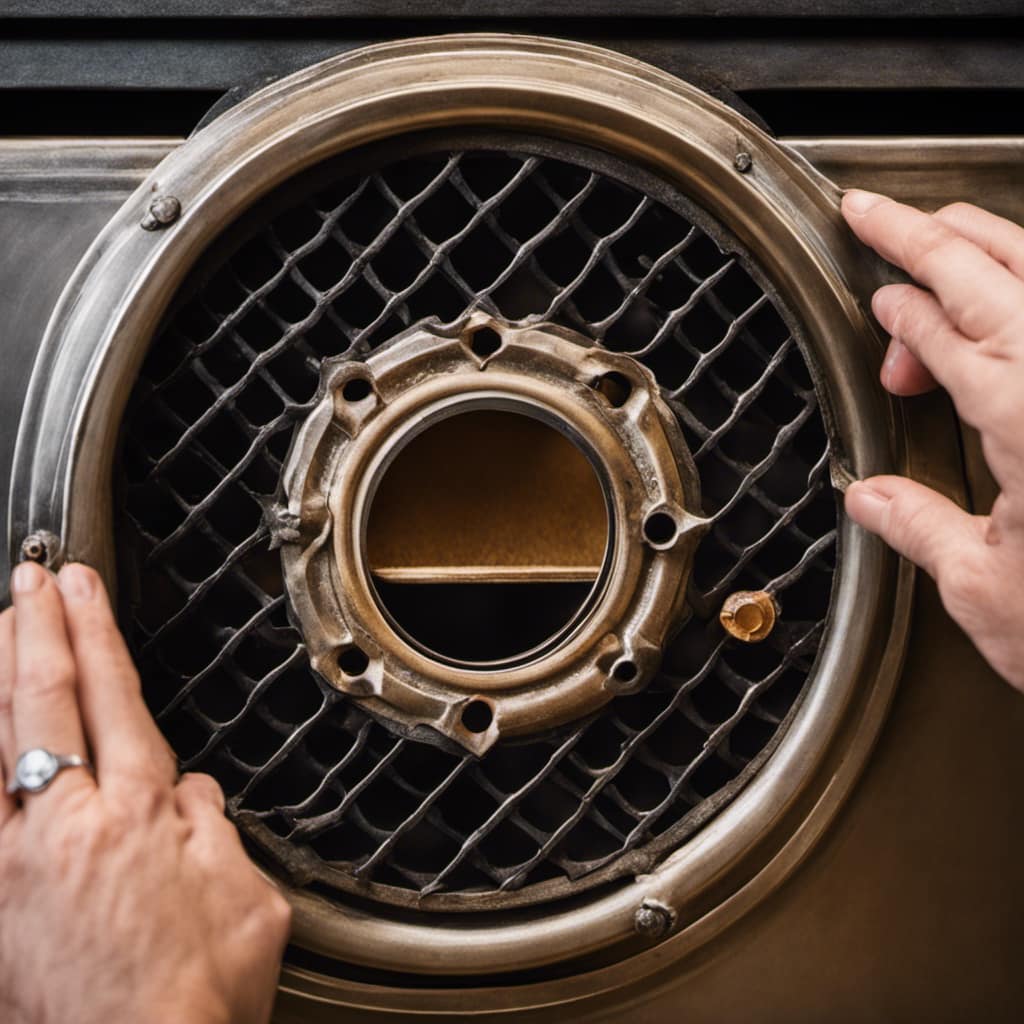
Following these steps will help you properly prepare your stove for its first use and ensure optimal performance.
Gradually Increasing Heat Output for Proper Conditioning
How can I gradually increase the heat output to properly condition my soapstone wood stove? Proper heat conditioning is essential for the longevity and efficiency of your soapstone wood stove. To achieve this, it is important to gradually increase the heat output, allowing the stove to adjust and distribute the heat evenly. Here is a table that outlines a recommended approach for gradually increasing the heat output:
| Day | Time | Heat Output |
|---|---|---|
| 1 | 2pm | Low |
| 2 | 4pm | Medium |
| 3 | 6pm | High |
| 4 | 8pm | Very High |
| 5 | 10pm | Maximum |
Monitoring and Adjusting Airflow for Optimal Performance
Throughout the heating process, it’s crucial to monitor and adjust the airflow to achieve optimal performance and ensure efficient heat distribution.
Proper airflow management is essential for maximizing efficiency and avoiding common airflow issues. One common issue is inadequate airflow, which can result in poor combustion and inefficient heat production. This can be resolved by opening the air intake or adjusting the damper to allow more air into the stove.
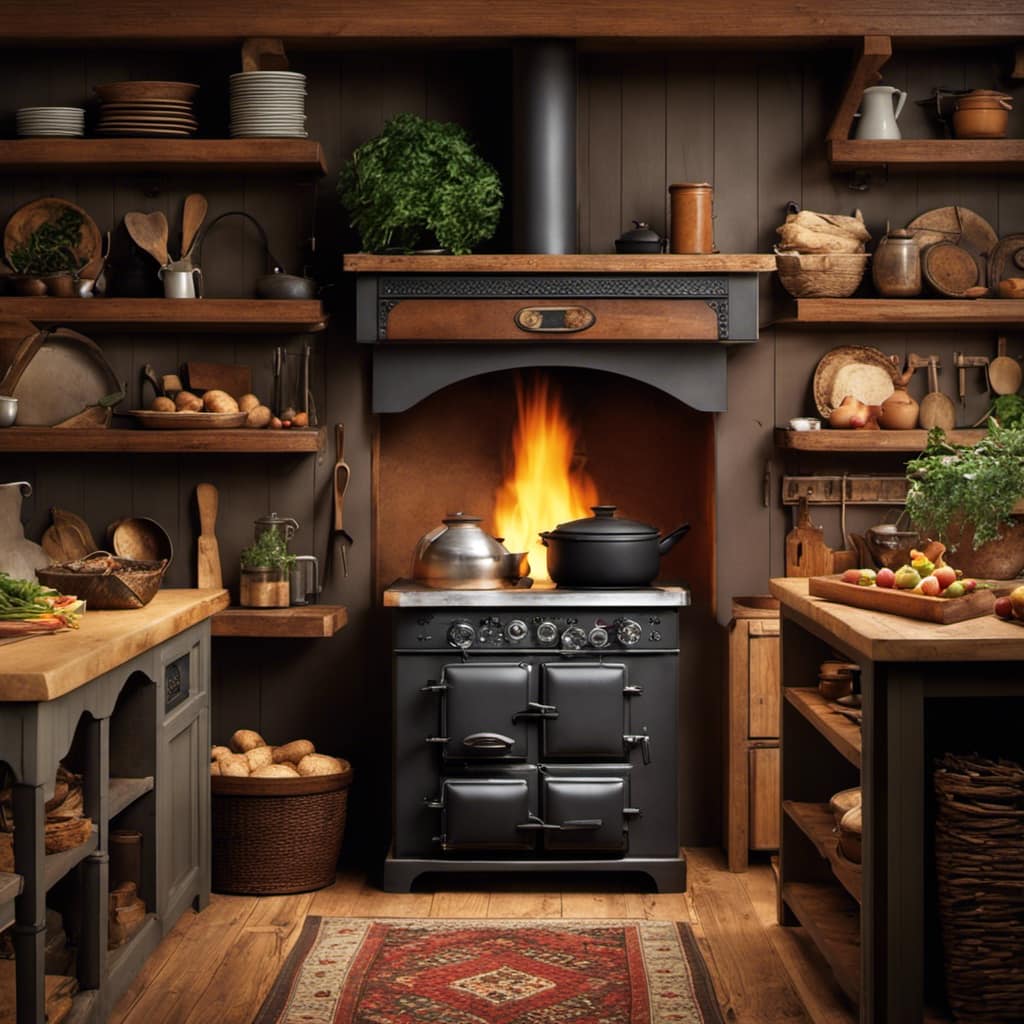
On the other hand, excessive airflow can lead to excessive heat output and potential damage to the stove. To troubleshoot this issue, simply close the air intake or adjust the damper to reduce the airflow.
By maintaining a balanced airflow, you can achieve optimal performance and efficient heat distribution in your soapstone wood stove.
Now let’s discuss how to maintain and clean your stove for longevity.
Are the Steps for Breaking in a Soapstone Wood Stove Different from a Traditional Wood Stove?
When it comes to breaking in a new wood stove, the steps for a soapstone wood stove may differ from those for a traditional wood stove. It’s important to follow the manufacturer’s instructions for both types to ensure the stove’s longevity and optimal performance.
Maintaining and Cleaning Your Soapstone Wood Stove for Longevity
I regularly clean my soapstone wood stove to ensure its longevity and efficient performance. Cleaning techniques for a soapstone wood stove are vital to prevent rust and maintain its functionality.
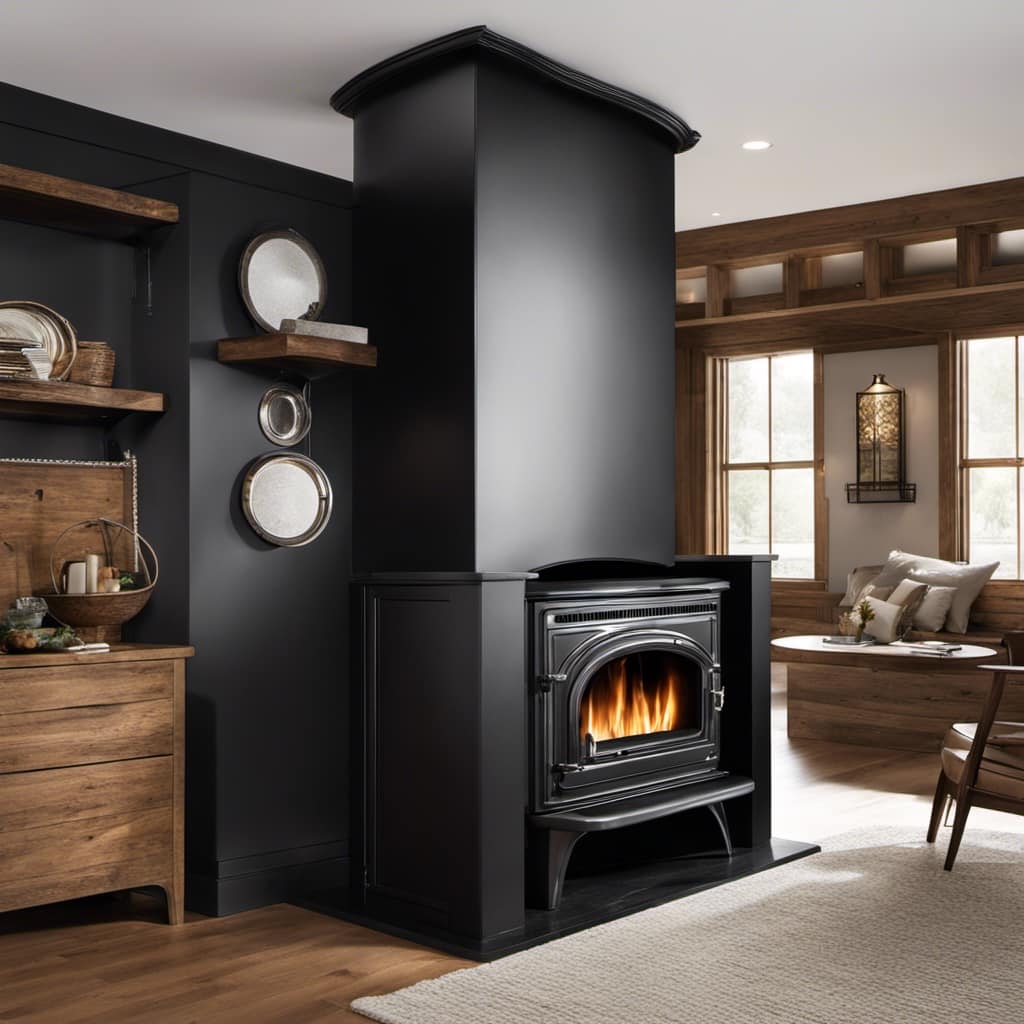
To start, I remove all the ashes and debris from the firebox using a shovel or ash vacuum.
Then, I wipe down the exterior and interior surfaces with a damp cloth to remove any soot or residue. For stubborn stains, a mild soap solution can be used, but it’s important to avoid abrasive cleaners that can damage the soapstone.
After cleaning, I make sure to dry the stove thoroughly to prevent any moisture from causing rust.
Regular cleaning not only keeps the stove looking clean, but also extends its lifespan and ensures that it operates efficiently.
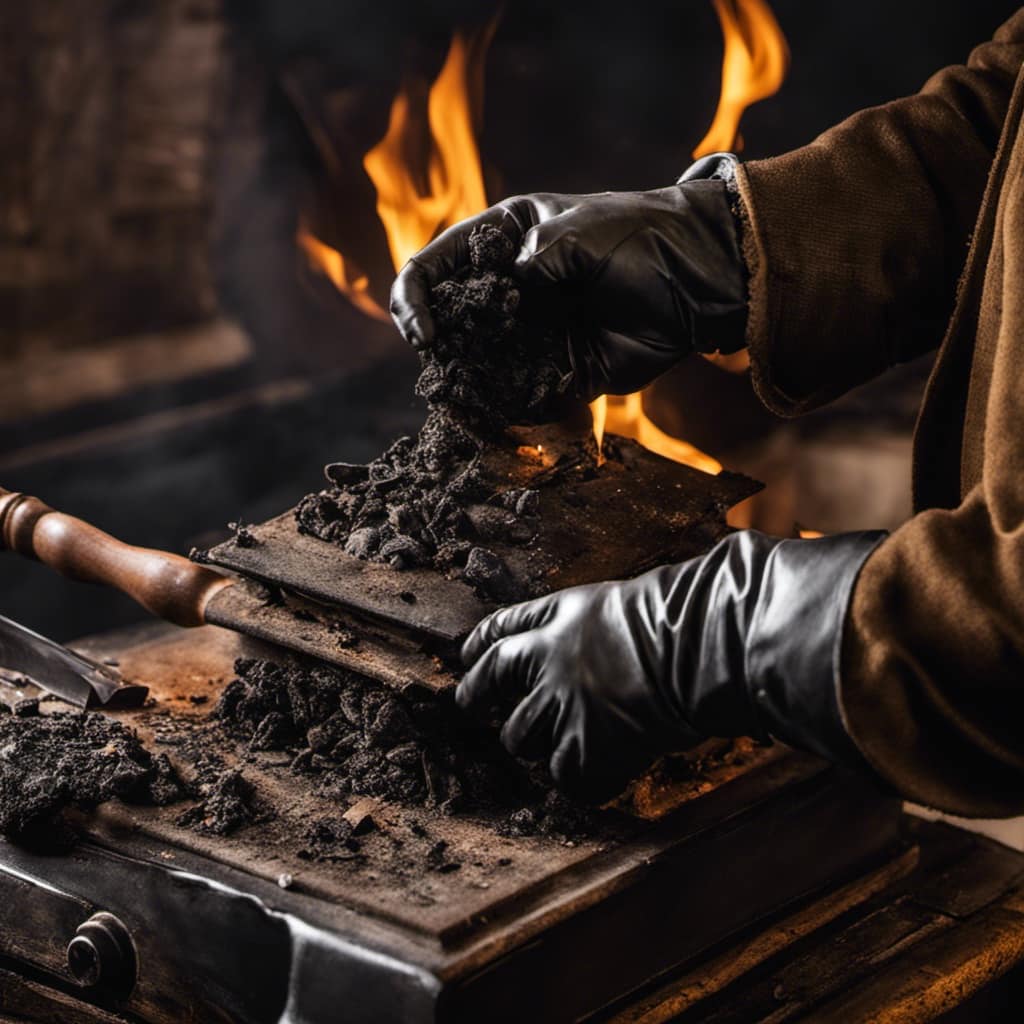
Frequently Asked Questions
How Long Does It Take to Break in a Soapstone Wood Stove?
It typically takes a few days to properly break in a soapstone wood stove. During this time, it’s important to gradually increase the temperature to prevent cracking and ensure the stove’s longevity.
Can I Use Any Type of Wood During the Break-In Period?
During the break-in period, it’s important to use the best types of wood for optimal performance. Different wood varieties can be used to properly season a soapstone wood stove.
What Should I Do if My Soapstone Wood Stove Emits a Strong Odor During the Break-In Process?
If my soapstone wood stove emits a strong odor during the break-in process, there could be various causes such as burning improper wood or not allowing enough air circulation. To reduce the odor, ensure proper ventilation and use seasoned hardwood.
Is It Necessary to Break in a Soapstone Wood Stove if It Is Brand New?
Breaking in a soapstone wood stove is crucial for optimal performance. It allows for the stove to adjust to heat and prevents cracking. Plus, the benefits of using soapstone – efficient heating and long-lasting warmth – make it worth the effort.

What Are the Potential Risks or Consequences of Not Properly Breaking in a Soapstone Wood Stove?
Not properly breaking in a soapstone wood stove can lead to potential consequences such as excessive smoke, poor heat distribution, and cracking. To avoid these risks, it is important to follow the manufacturer’s guidelines and gradually increase the heat during the break-in period.
Conclusion
In conclusion, breaking in your soapstone wood stove is crucial for optimal performance and longevity.
By gradually increasing the heat output, monitoring and adjusting airflow, and regularly maintaining and cleaning your stove, you can ensure its efficiency and durability.
Just like a seasoned artist delicately brushes strokes on a canvas, breaking in your soapstone wood stove is like nurturing a masterpiece that will provide warmth and comfort for years to come.
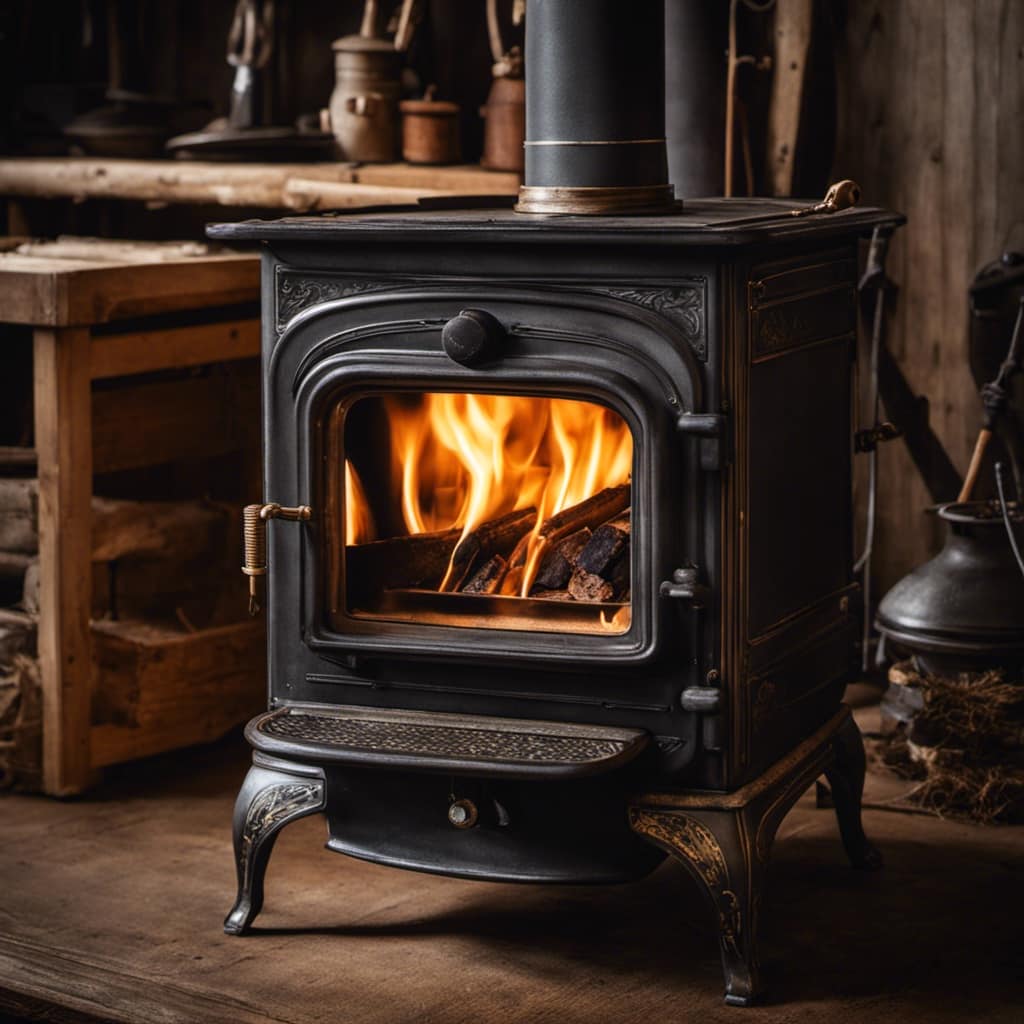
Growing up surrounded by the vast beauty of nature, Sierra was always drawn to the call of the wild. While others sought the comfort of the familiar, she ventured out, embracing the unpredictable and finding stories in the heartbeat of nature.
At the epicenter of every remarkable venture lies a dynamic team—a fusion of diverse talents, visions, and passions. The essence of Best Small Wood Stoves is crafted and refined by such a trio: Sierra, Logan, and Terra. Their collective expertise has transformed the platform into a leading authority on small wood stoves, radiating warmth and knowledge in equal measure.


